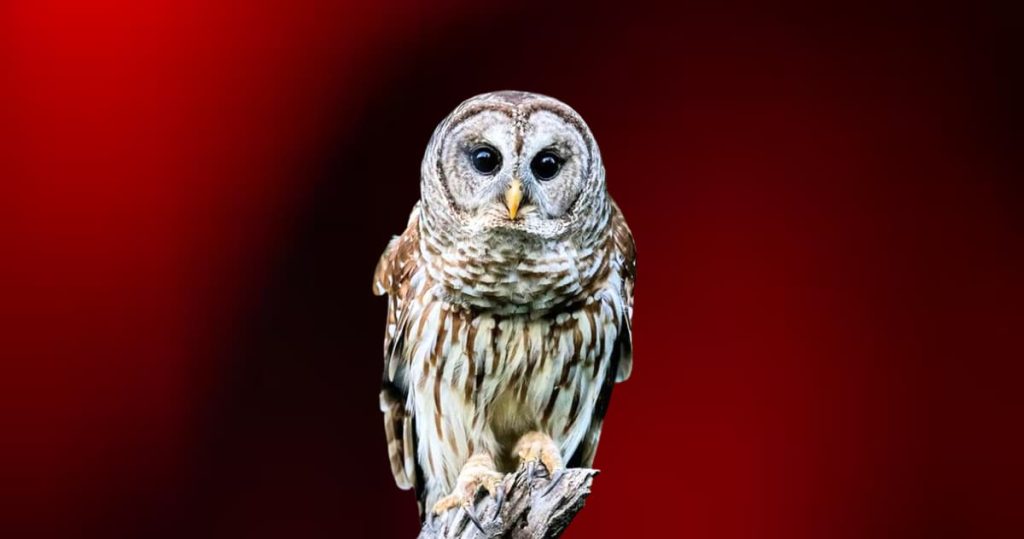
Owls are a species of bird that can be easily distinguished from other birds because of their flat faces. Now the question may come to your mind: why do owls have flat faces?
If one sees an owl for the first time, one can easily distinguish and remember it from other birds because of its large mouth and two large round eyes.
Owls have many small feathers on their mouths, and most owls have a heart-shaped mouth guard and sometimes have a round of other colored feathers to better represent this heart-shaped mouth guard.
Due to the flat faces of owls, it is very convenient for them to live. Let’s know
Contents
- 1 Why do owls have flat faces?
- 2 To locate the sound
- 3 To provide good eyesight
- 4 Blending in with the environment
- 5 Helping owls in silent flight
- 6 Do all owl species have flat faces?
- 7 What owls have flat faces?
- 8 What owls do not have flat faces?
- 9 Where are owls’ ears located?
- 10 Heart face owl
- 11 Snowy owl facial disc
- 12 Barn owl face shape
- 13 Owl with heart-shaped feathers
- 14 Owl heart-shaped face
- 15 Why do owls have yellow eyes?
- 16 FAQs
- 17 Conclusion
Why do owls have flat faces?
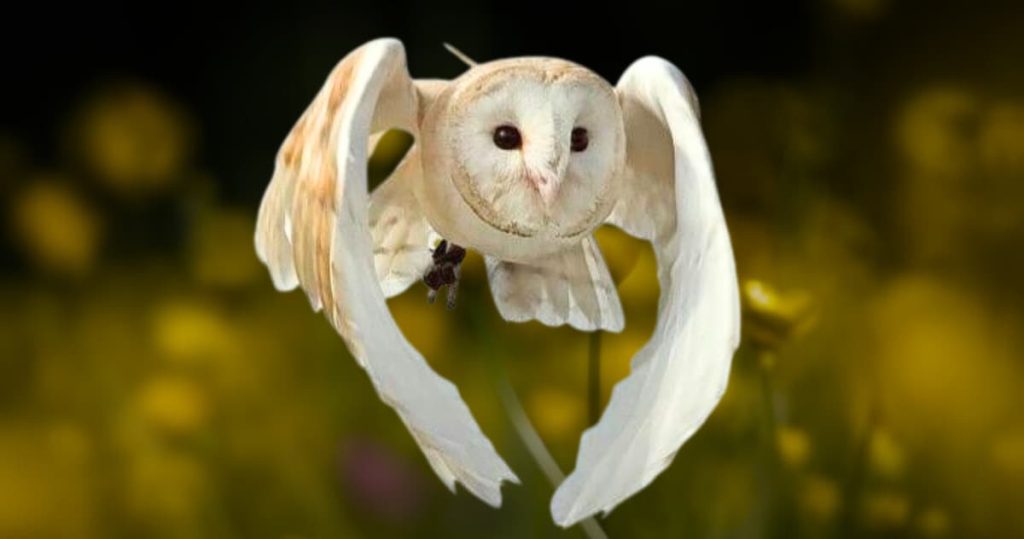
Owls have a disc-shaped face, known as a facial disc, which makes them exceptional stealth hunters as well as their beautiful appearance. Below are the reasons behind the flat faces of owls, or what benefits owls get from having a flat face:
To locate the sound
The concave shape of the owl’s mouth disc funnels sound waves into the owl’s ears, helping them to focus sound and play an important role in determining the exact location of prey. Owls can easily detect the slightest noise or screech made by their prey.
To provide good eyesight
Owls have two large eyes that are developed to allow them to see in low light. If you look at other birds, you will understand that their eyes will show on both sides, and due to the flat face of owls, the eyes of owls like ours are also forward, due to which they can see well and focus on the prey properly, so they are efficient night hunters.
Blending in with the environment
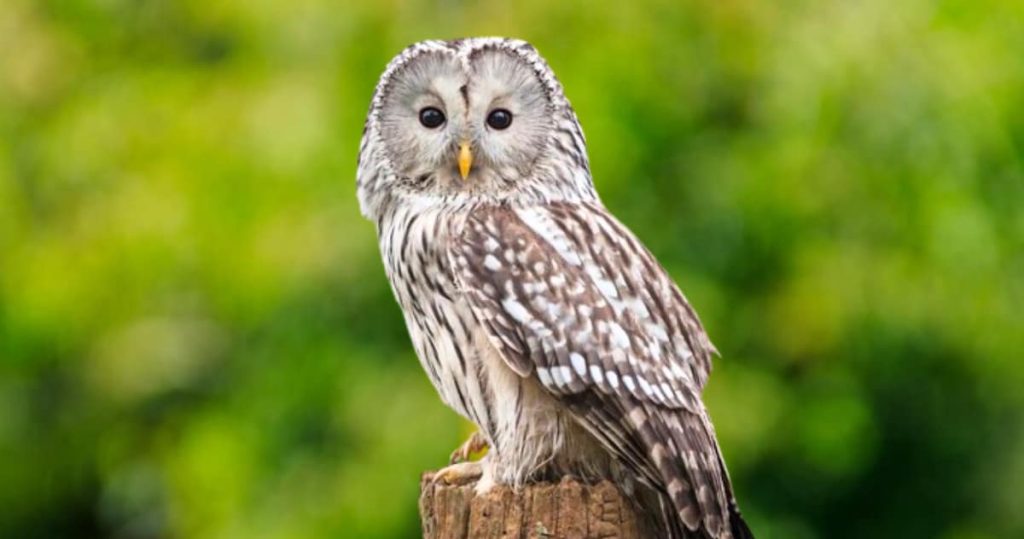
Owls have small colored feathers on their flat faces that help them hide in their habitats. Since owls are nocturnal and during the day they take shelter in trees or bushes, they remain vulnerable to predators, but owls blend in with their surroundings in such a way that birds of prey cannot recognize or perceive them.
Helping owls in silent flight
The flat faces and small feathers on the mouths of owls play an important role in their silent flight. When owls fly in the sky to hunt, their wings make tiny sound, and their mouth feathers do not cut through the air easily, making them efficient night hunters.
Do all owl species have flat faces?
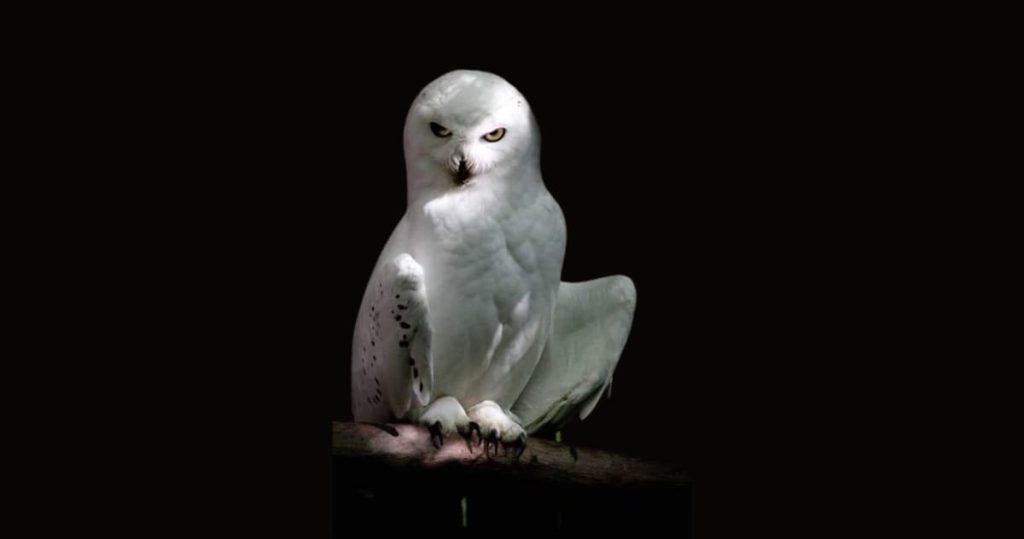
The shape of owls’ faces varies considerably depending on their species, as not all species have flat faces. Owls’ good eyesight and hearing make them efficient nocturnal hunters.
Owls with flat faces have a sharper sense of hearing than owls without flat faces, so they can easily hear the slightest sounds made by their prey.
Different species of owls have some distinctive characteristics, such as being nocturnal, diurnal, migratory, or non-migratory.
Therefore, the shape of the face of the owls, their size, the color of their feathers, and their behavior vary significantly depending on the species of owl, so it can be said that not all species of owls have round faces.
What owls have flat faces?
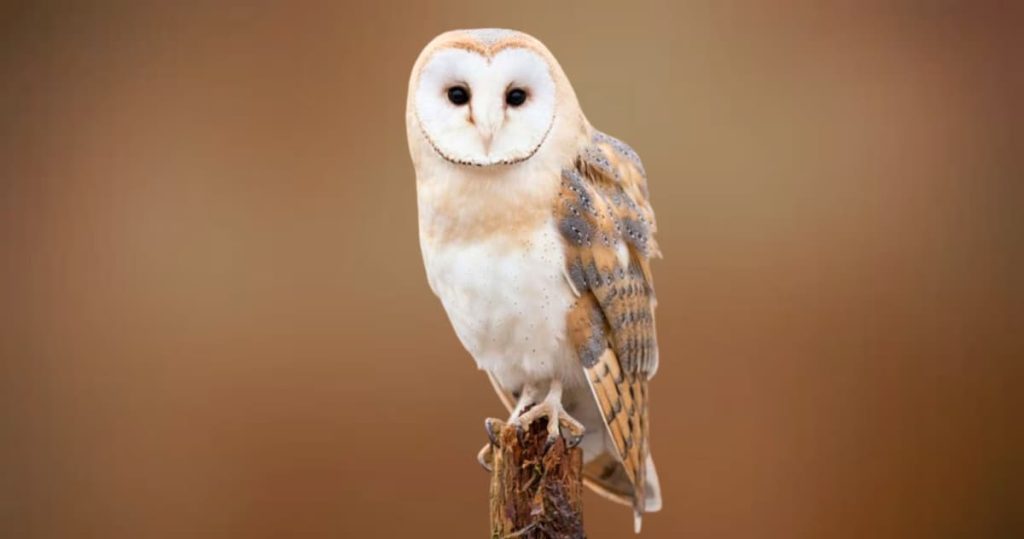
Most species of owls living on Earth are flat-faced, which is ideal for their nocturnal lifestyle.
Owls have larger mouths than other birds, and owls have more feathers on their mouths, which create a flat structure.
Because of the flat structure of the mouth, sound waves can easily enter the ears, so owls can hear very little sound and focus on the location of the sound.
Also, due to their flat face, their eyes are forward like ours, which is ideal for focusing on an object. But owls can’t rotate their eyes like we do, so owls bob their heads to focus on a particular spot.
Some of the names of flat-faced owls are mentioned below:
- Barn owl
- Barred owl
What owls do not have flat faces?
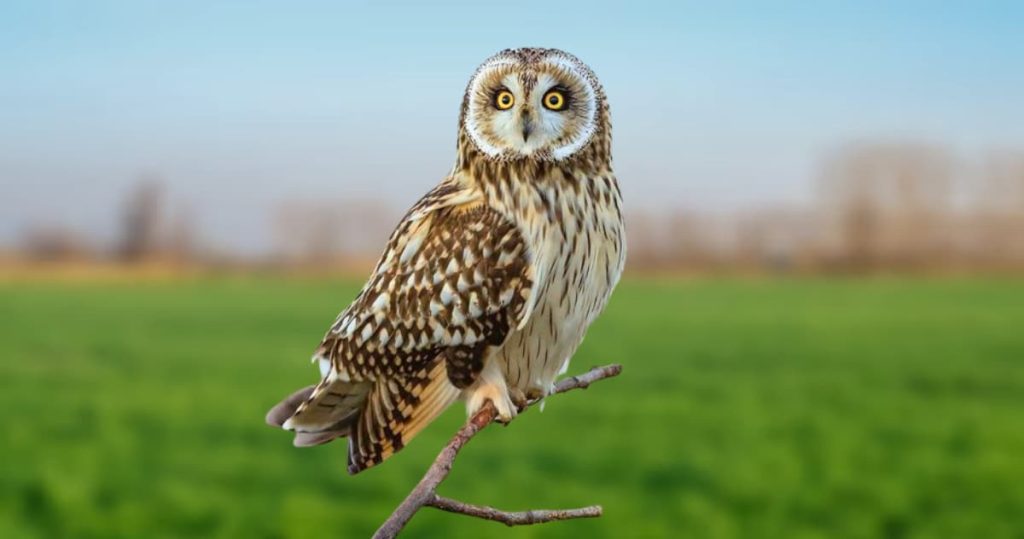
When we say the name of owls, their flat faces always appear in our eyes, but not all species of owls have flat faces. Several species of owls have similar facial structures to other species of birds. All these species of owls have a facial structure similar to that of a common bird due to the uniqueness of their species. Depending on the individuality of owls, their habitat and other characteristics change.
The names of some species of owls that do not have flat faces are mentioned below:
- Long-eared owls
- Eastern Screech Owl
- Short-eared owl
- Long-eared owls
- Little Owls
Where are owls’ ears located?
Long-eared Owls, Great Horned Owls, Eurasian Eagle-Owls, Eastern Screech-Owls, Scops Owls, etc., have two feather bunches on both sides of the head like cat or rabbit ears, which many of us mistake for owl ears.
Owls’ ears are hidden ears that are hidden in the small feathers of their mouths. Owls’ ears are positioned with their facial discs in a way that is almost impossible to see. Owls’ ears are covered with feathers at the ends of their two eyes on either side of their heads.
Owls have a facial disc that funnels sound waves into their ears. Owls have the most acute sense of hearing and vision, making them excellent nocturnal hunters.
Heart face owl
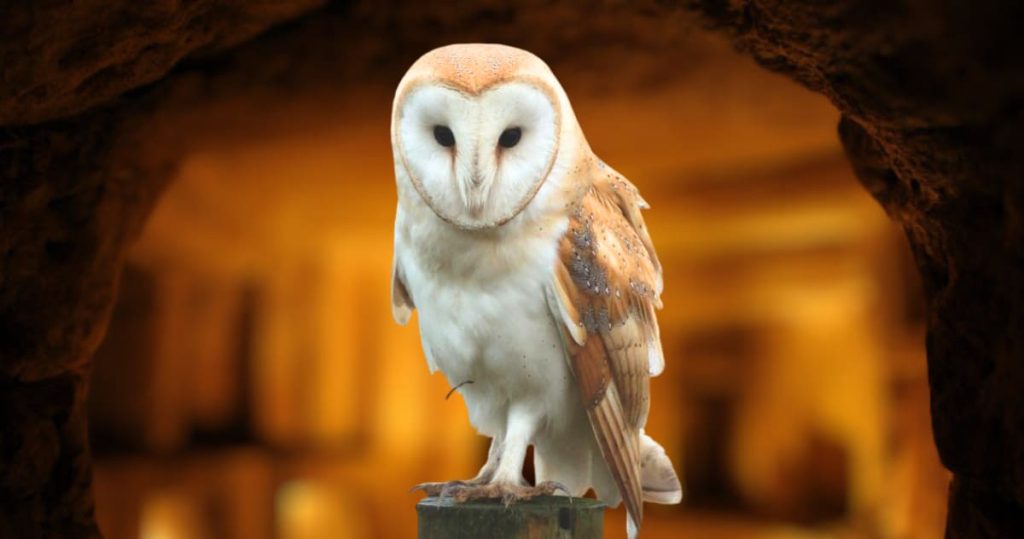
Barn owls are known as heart-face owls because of their heart-shaped faces. There are about 35 subspecies of Barn owl in the world, which are spread all over the world except Antarctica.
Barn owls have a distinctive heart-shaped flat face with an arrangement of small white feathers and a line of small brown feathers towards the outer edge of the disc, accentuating the heart shape.
Looking at the heart-shaped face of this owl species, you may think that this species is innocent, but they are skilled hunters. This species of owl is more likely to be around people than other owls.
If you see an albino owl of this species, you will not notice the brown round edge on the outer edge of their heart-shaped face disc.
Snowy owl facial disc
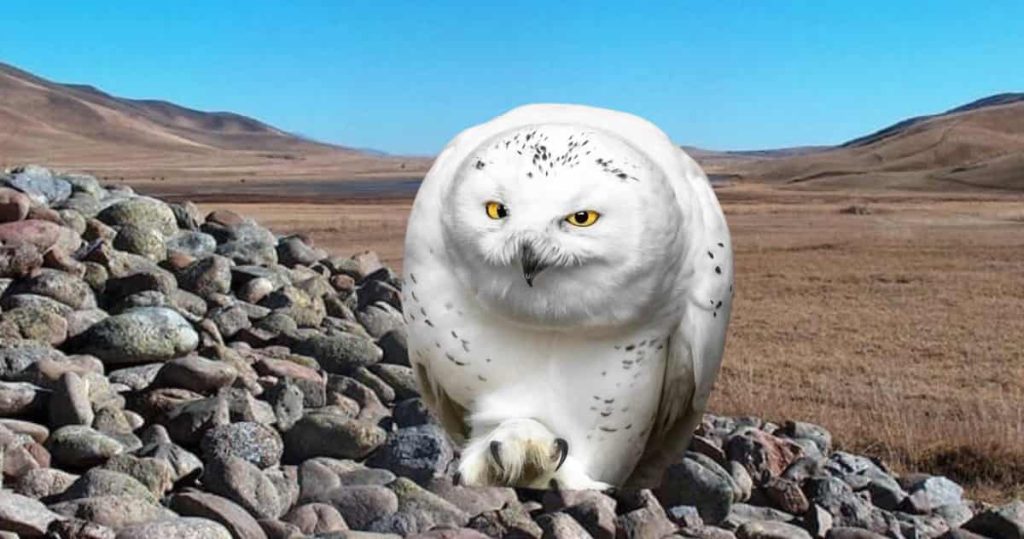
Some species of owls, such as Barn owls and Barred owls, are famous for their disc faces, but snowy owls have slightly smaller disc faces rather than a disc.
Since snowy owls live in snowy areas, their face shape is small in keeping with this habitat.
Snowy owls live in the Arctic tundra region, where blizzards are occasionally observed. The shape of their face is slightly pointed rather than disc-shaped so that the wind from the blizzard can easily pass through the sides of the owl’s mouth.
In short, the face shape of snowy owls is ideal for their habitat, which helps them to survive in harsh snowy conditions.
Barn owl face shape
If any species of owl is best known for its facial shape, it is the barn owl. The face feathers of this species of owl are white, and these feathers form a heart-shaped face shape with a brown feather border.
The shape of the barn owl’s mouth allows sound waves to penetrate perfectly into their ears, which has helped this species of owl become efficient hunters.
Various studies have shown that the heart shape of owls’ mouth discs helps to channel airflow, which greatly aids their flight. According to many scientists, this shape of the face of owls is ideal for their nocturnal life.
Owl with heart-shaped feathers
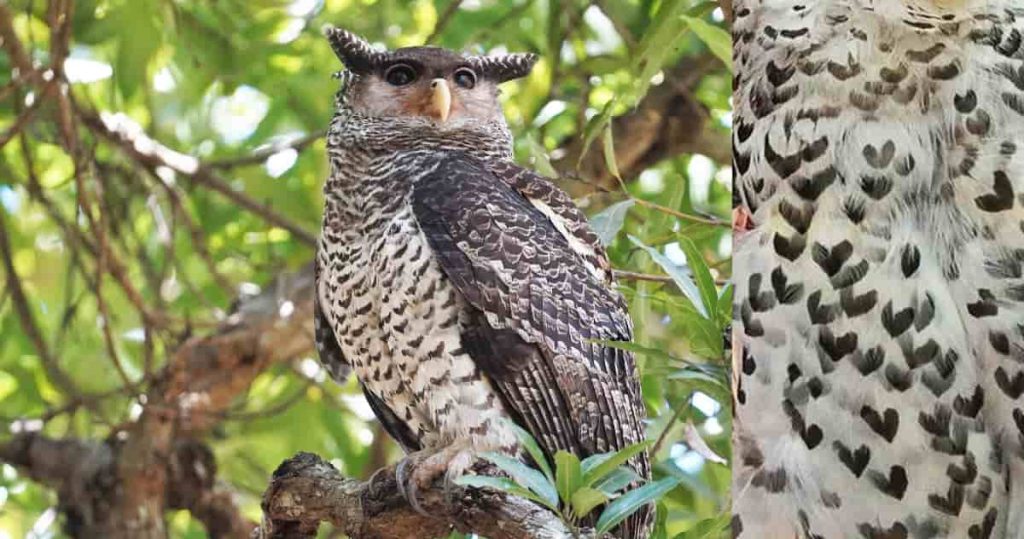
A species of owl can be seen in the world whose feathers have a heart-shaped pattern. The name of this owl species is spot-bellied eagle owl, also known as forest eagle-owl.
The native habitat of this species of owl is Southeast Asia. They have a bunch of feathers on both sides, just at the ends of their two eyes.
They look a bit different from other owls, and because of their eerie calls, they are called ‘forest ghosts’ in many places.
This species of owl is currently listed as endangered, which is why it is on the International Union for Conservation of Nature’s (IUCN) Red List.
Owl heart-shaped face
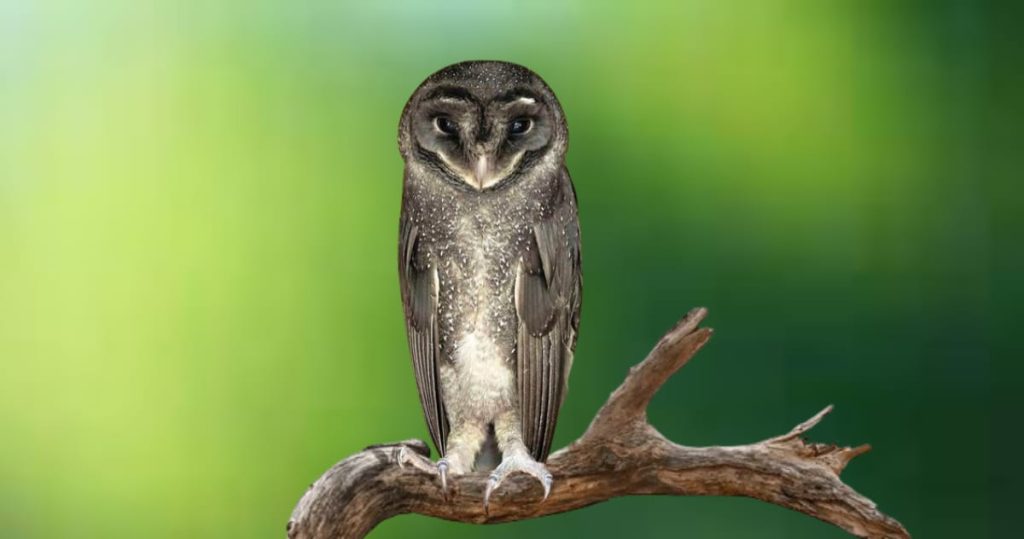
Several species of owls have a heart-shaped face due to the arrangement of the face disc and the structure of the feathers on the face.
The barn owl facial disc is best known for being heart-shaped. The small white feathers on the face of this species of owl show this heart shape well.
However, apart from the barn owl, there are several species of heart-faced owls whose face shapes are similar to those of the barn owl. But their feather colors are completely different from each other.
Below are the names of several species of owls, which are not wrong to say heart-shaped owls:
- Barn Owl
- Lesser Grass Owl
- Greater Grass Owl
- Eastern Screech-Owl
- Western Screech-Owl
Why do owls have yellow eyes?
Several species of owls have yellow eyes, mainly those that are more active during the day.
Some species of owls have a yellow pigment in their eyes called xanthopterin. These yellow eyes are able to filter out blue light, making them very useful for diurnal owls.
However, most species of owls have brown or black eyes, which identifies them as nocturnal owls. Owls have dark-colored eyes that help them see well in low light.
Below are the names of several species of owls with yellow or orange eyes:
- snowy owl
- Great Horned Owl
- Burrowing Owl
- Northern Saw-whitt Owl
FAQs
Q. Why do owls have concave faces?
Ans: Owls have concave faces that distinguish them from other birds. Concave faces allow owls to hear and see better than other birds.
Q. Why do owls have big faces?
Ans: Owls are nocturnal predators and have two large eyes. Big faces are needed to hold these two eyes, so owls have big faces.
Q. What is the shape of an owl’s face?
Ans: Most species of owls have a round or flat face shape that is ideal for catching their prey.
Q. Do all owls have heart-shaped faces?
Ans: Several species of owls have a heart-shaped face, such as the Barn Owl.
Conclusion
The above-mentioned Why do owls have flat faces answer has given you adequate knowledge.
Owls have different facial structures, but most owls have flat faces, which increases our attraction to this species.
Owls have many physical characteristics that will surprise you. On this website, I have presented such interesting and important information about owls.
You can read other posts about owls on my website to learn more about this species of bird.